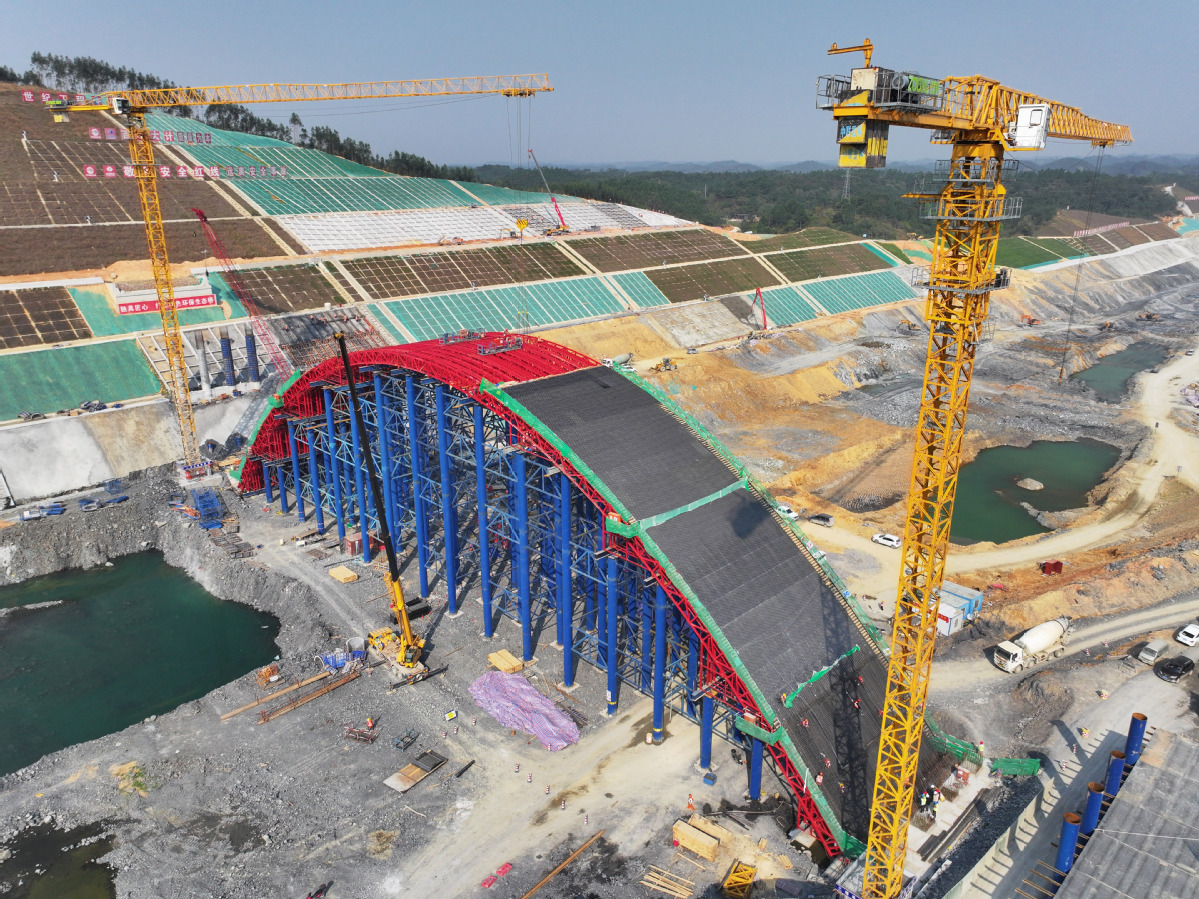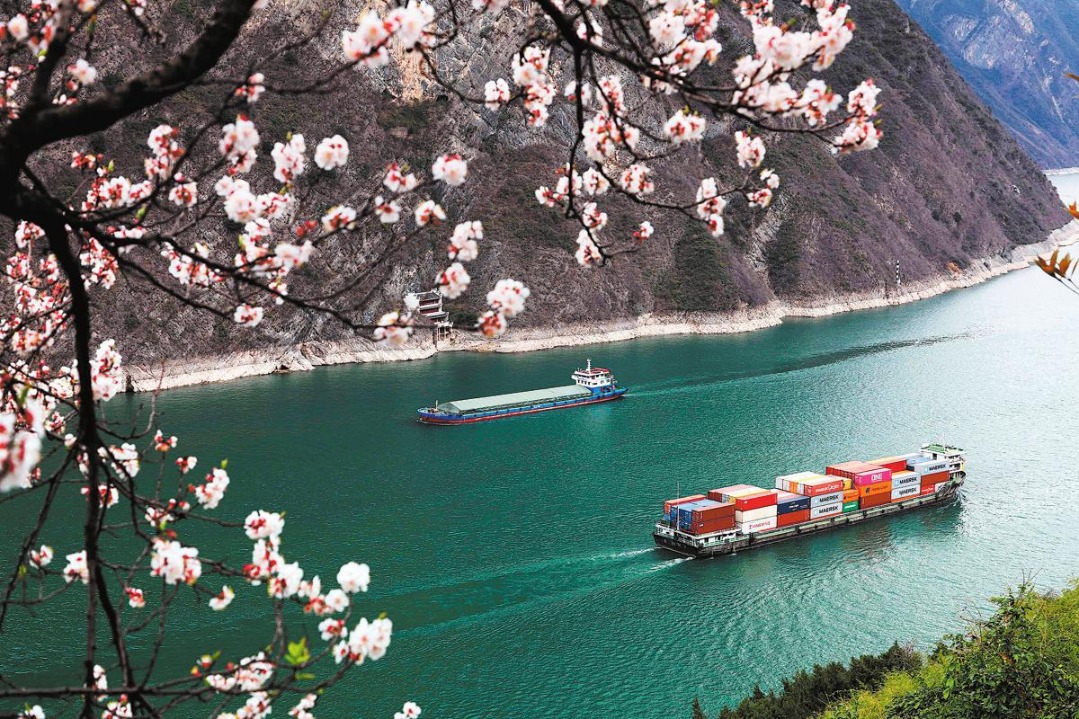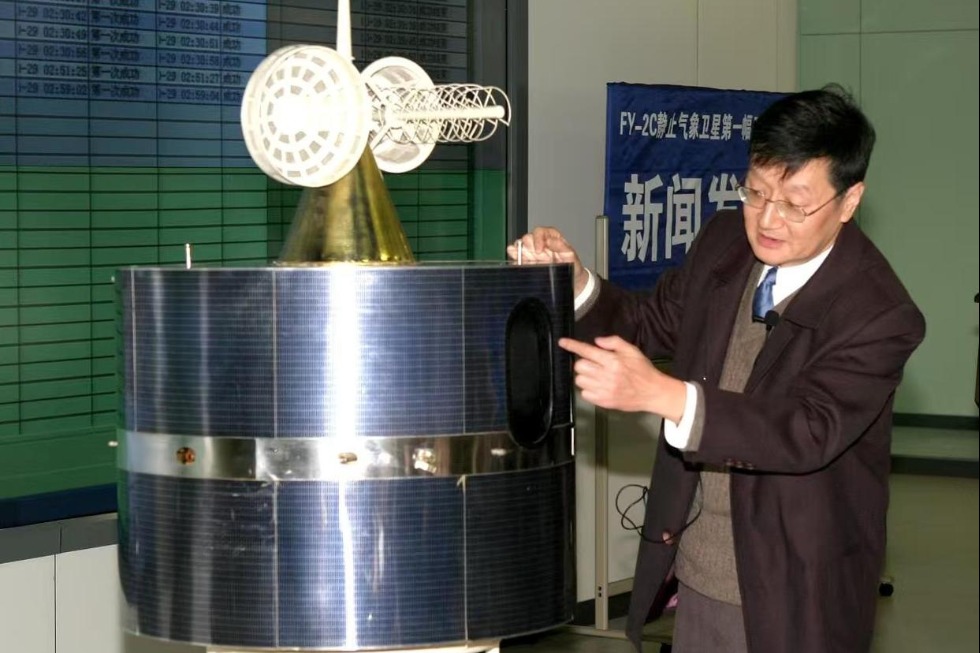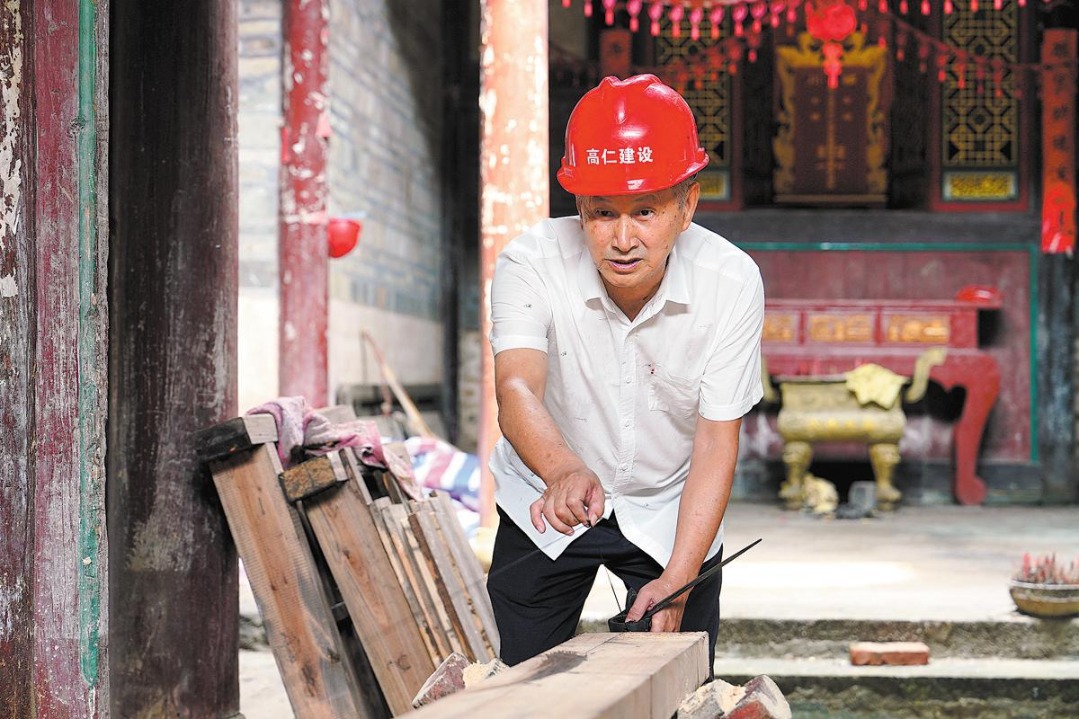A waterway project coexists with nature


One of the major projects of China's new western land-sea corridor proposes an innovative answer to the dilemma of balancing ecological protection with the construction of large-scale infrastructure projects.
Places like Yunnan and Guangxi in Southwest and South China have relatively rich river networks without navigable waterways that lead directly to the ocean due to mountainous terrain. The Pinglu Canal, which began in 2022, offers a long-awaited maritime outlet and being hailed as a new engine of regional economic growth.
Building such a canal requires massive earth excavation, inevitably affecting the surrounding environment. According to estimates, the total volume of earth and rock excavated for the Pinglu Canal reaches an astonishing 315 million cubic meters. The question naturally arises: how is such a massive volume of material managed?
At the Madao Hub of the canal, engineers have designated integrated reuse zones for the excavated material. The canal's entire land elevation initiative involves storage sites spanning approximately 1,973 hectares, which will generate around 706 hectares of new arable land — effectively transforming waste into a driver of rural vitalization, promoting both economic and ecological gains.
The Hub incorporates two specially designed wildlife passages — one exclusive and one shared — marking China's first dedicated wildlife crossing over a major canal. The exclusive passage bridges the canal's main channel, connecting fragmented habitats on either side.
To ensure safe passage for wildlife such as the leopard, squirrel and coucal, researchers conducted detailed studies on species distribution, behavioral patterns, and feeding habits. The passages replicate natural ecosystems with multi-layered vegetation that offers shelter and food sources, forming stable ecological corridors that encourage natural movement.
The canal's Qingnian Hub also has delivered a breakthrough in biodiversity restoration with the construction of a 480-meter-long ecological fishway, addressing a challenge that has hindered fish migration in the Qinjiang River for over six decades.
This integration of green infrastructure into large-scale development exemplifies China's evolving model of balancing environmental protection with economic progress, setting a new benchmark for biodiversity-friendly engineering.
The 134.2-kilometer canal is expected to be completed and put into use in 2026.
Deng Jiajun, Li Tingxuan, Gao Yixuan, Wang Zijian, Zhao Deyu and Zhao Yujie contributed to the story.
- A waterway project coexists with nature
- Fujian coast guard conducts routine patrol of waters near Kinmen
- US students experience martial arts in Shenyang
- Yunnan lifestyle: Where time slows and life shines
- Beijing emerges as leader of China's AI industry
- Jiangsu cracks down on City Football League scalpers





































